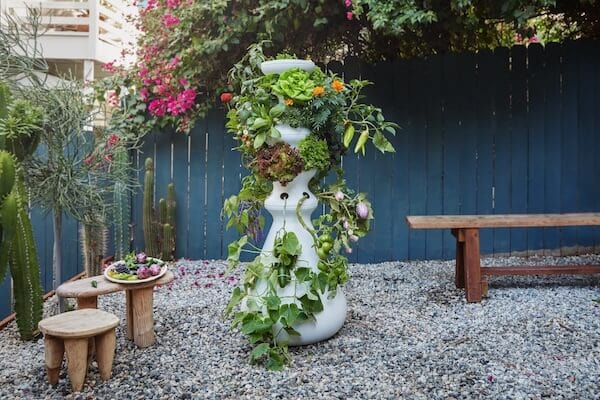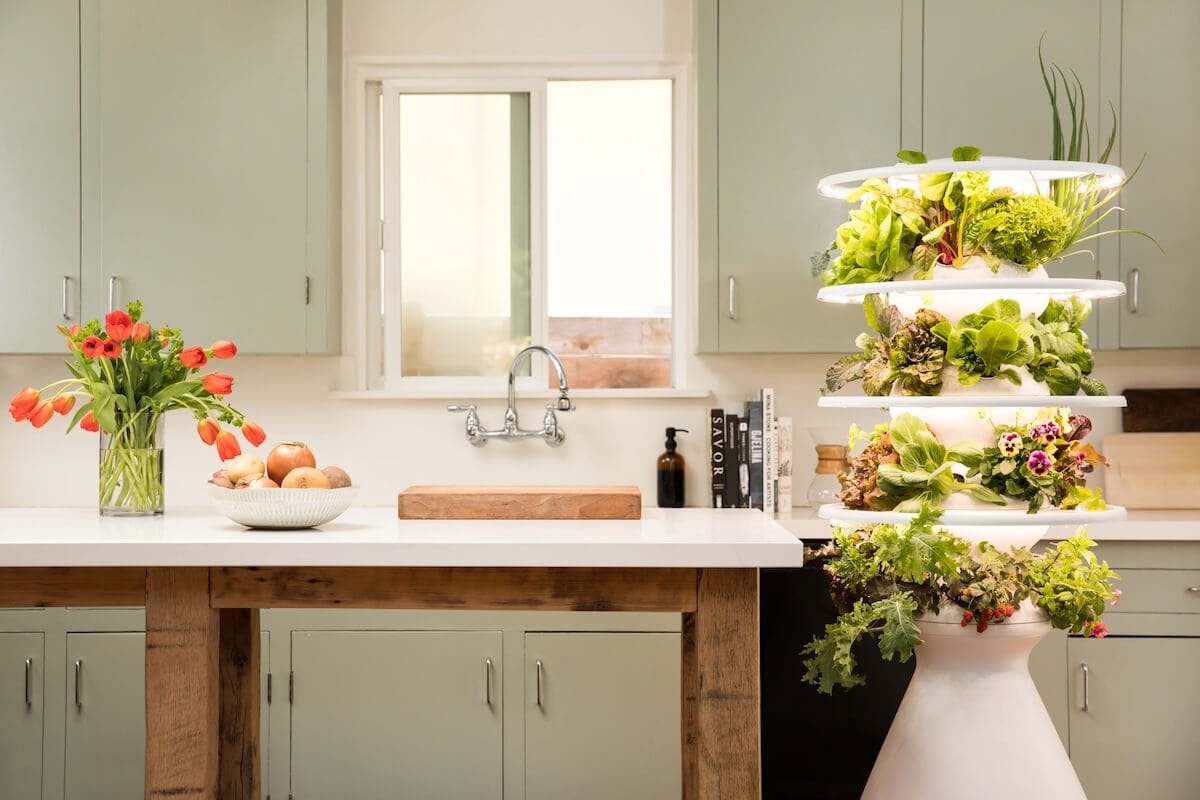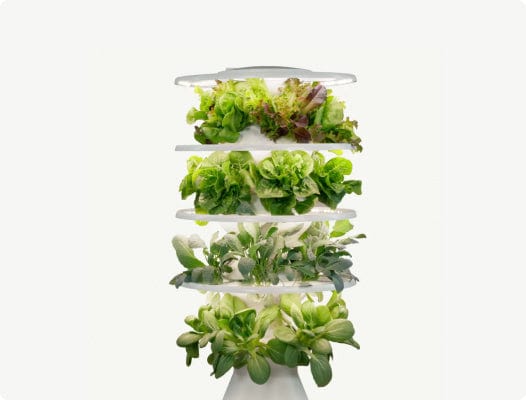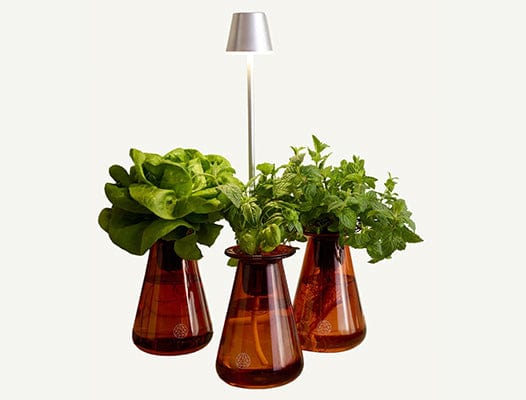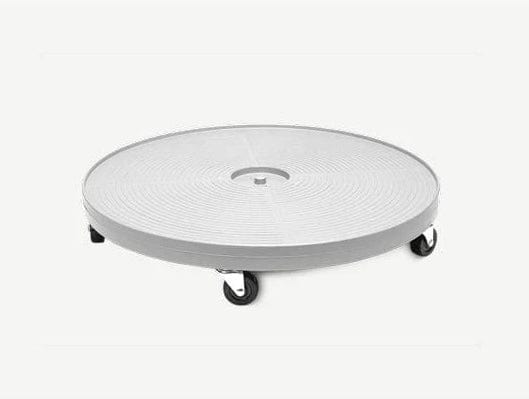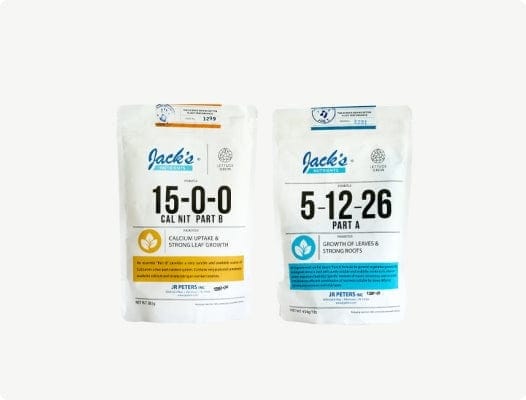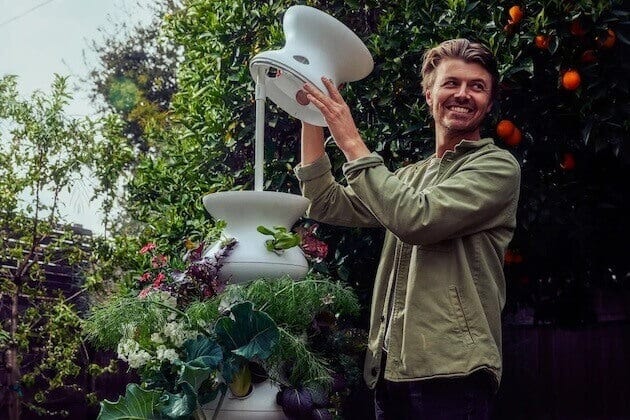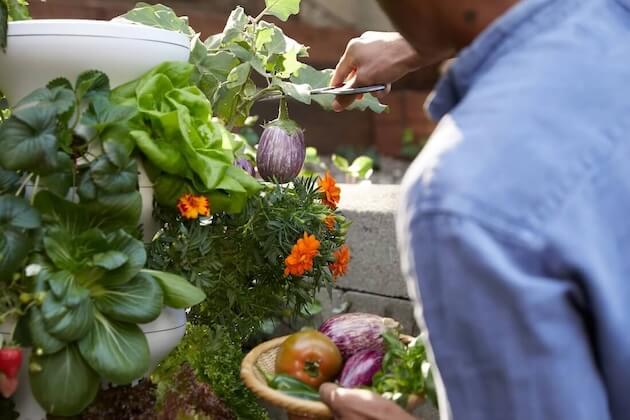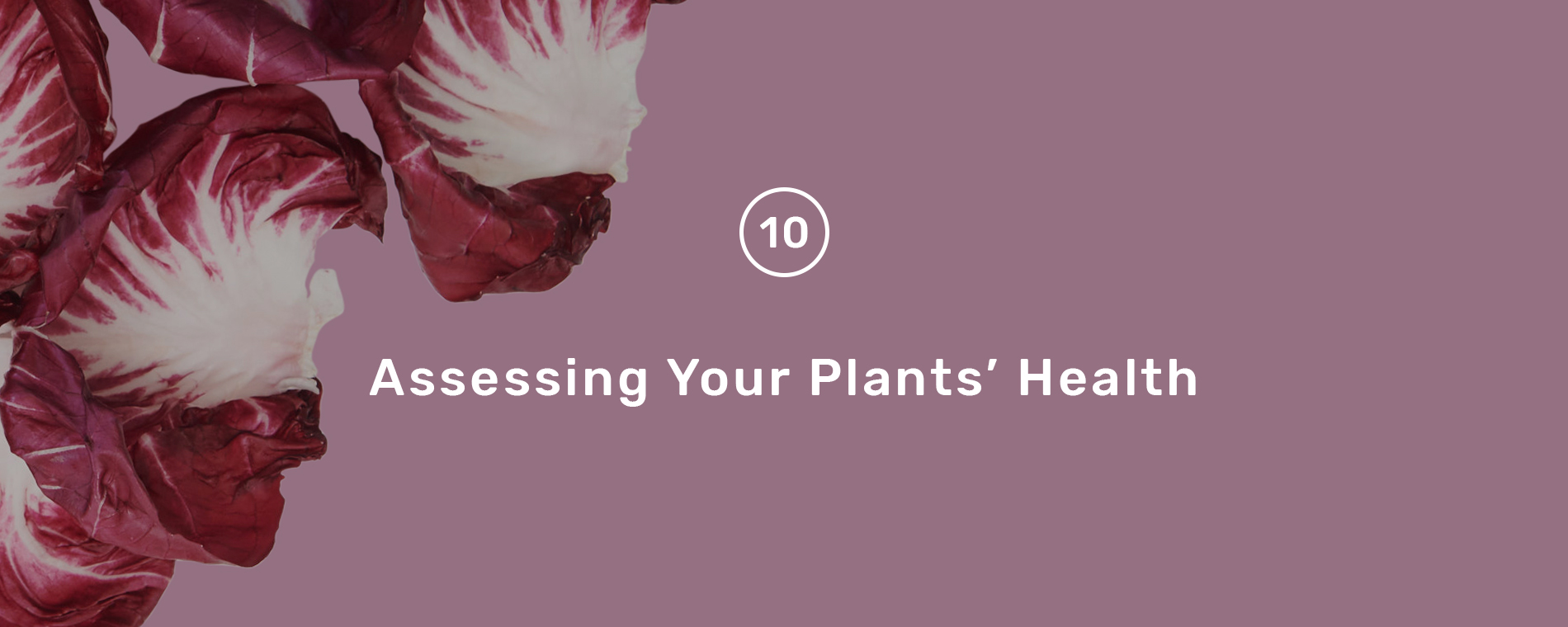
Plant’s are the best indicator of their health and any issues they may be dealing with. This includes pH levels, pests, light and wind exposure, holes in leaves, drooping leaves, and more! By becoming familiar with these visual cues, growers can quickly identify and resolve any problems affecting their plants!
We outline some of the most common ways to check-in on your plants in this resource; however it can be helpful to keep a growing journal in order to document your growing experience. This will help to train your eyes as well as make it easy to promptly diagnose and fix returning or seasonal issues.
Keep reading to learn more!
pH Issues
pH is important because it determines the amount of nutrients plants are able to absorb. If your pH levels are too high or too low then it can result in nutrient deficiencies even if there are plenty of nutrients present in your water.
• High pH (basic): pale or yellow leaves with dark veins
• Low pH (acidic): dark red or purple leaves or blackened, wilted edges
Since leaf discoloration can be caused by multiple factors, it is important to first test your pH levels to determine if that is the root cause. You will need to keep investigating if your pH levels are in the recommended range of 5.5 - 6.0. Watch the video below to help identify pH issues on your Farmstand.
Pests
Each pest is different so you may notice a few different visual cues that announce their arrival. We recommend incorporating pest checks into your weekly maintenance so that you find any unwanted visitors before they have time to make their presence known. It is much easier to get rid of pests early on before they have time to establish themselves on your seedlings.
This is how some of the most common pests can affect your plants. For more information on garden pests, how to get rid of them, and pest prevention best practices, read our pest management guide!
• Holes in leaves and black droppings: caterpillars. Remove them by hand or apply a Bt spray.
• Distorted and/or discolored growth: aphids. Wash them off with water. Optional: apply a wide spectrum insecticide, like neem oil.
• Thin webbing and pale leaves: spider mites. Remove the affected leaves to prevent them from spreading. Optional: apply a wide spectrum insecticide, like neem oil or pyrethrin.
Leggy Growth
“Leggy” growth refers to noncompact, lanky growth. It usually manifests as a tall, long main stem with sparse leaf growth along the stem. This is almost always the result of insufficient light exposure which causes the plant to grow outward in search of more light. If this occurs then we recommend rearranging your seedlings so that they get adequate light, moving your Farmstand to a sunnier area, or growing indoors with our Glow Rings!
It is very hard to correct leggy growth once it develops. You should plant fresh seedlings once you have fixed the root issue by moving your Farmstand to a sunnier area or adding Glow Rings.
Bolting
Bolting is the term used to describe when a plant begins to flower in order to create seeds and reproduce. It most often occurs when a plant has reached the end of its life cycle or is exposed to stressful conditions which lead it to believe it will die off before it reaches a mature size. Common environmental stressors include inadequate light, high temperatures, not getting watered, and the changing of seasons.
It is easy to tell when a plant has bolted because it will produce a thick, main stalk in the middle of the plant and sparse, noncompact growth. A flower will also form at the top of the main stalk. This process redirects energy and resources to seed production which will cause the plant to become tough and bitter. We recommend removing plants once they have bolted and giving them a test taste to see if they are still usable.
Tip Burn
Tip burn refers to the browning of leaf edges. It happens when water and nutrients are not transported through the plant quickly enough to match the speed at which the plant is growing. Typically, it is not caused by insufficient water or nutrients but because the plant is experiencing low rates of transpiration (the mechanism by which plants internally transport water and nutrients).
You can increase transpiration rates by exposing your plant to more airflow. Tip burn is commonly seen in plants that produce a head, like cabbage or romaine, because large outer leaves prevent inner leaves from getting the proper amount of airflow. This can be solved by harvesting the outer leaves, moving the seedling to a different spot on your Farmstand, or setting up a small fan to blow on your Farmstand if you are growing indoors.
Wilting or Drooping Leaves
It is common for plants to wilt if they are not getting enough water. This happens because the plant is sweating out more water than it is drinking which causes leaves to lose their rigid structure. It can be solved by increasing your watering cycle or providing your plants with some shade during the hottest parts of the day.
This issue is most common in the warmer months. Plants will recover overnight when temperatures drop and they are able to drink more water. Due to this, we recommend harvesting plants in the morning during spring and summer.
Wilting can also occur if your Farmstand has been disconnected from its power source, if a plant is not pushed all the way into the grow cup, or if a root system is blocking or diverting water. Be sure to check your power source, pump, diffuser cap, and timer settings to make sure they are all working properly. If your power source was disconnected for a short amount of time, set your timer to run continuously for 4 - 5 hours and your plants should recover.
Slow Growth
The most common cause for plants growing slowly, or not thriving, is insufficient light. Read more on how to place your Farmstand in the best spot for it to thrive here.
If you find there isn't an ideal spot outdoors, don't worry - you can grow most of our varieties indoors too! Winter weather can also slow or halt growth. Nighttime temperatures below 40F are a signal that you may do better bringing your Farmstand indoors for the winter. Check out our indoor growing guide for more details.
Still not sure if your plants are on track? Send us some details about your growing environment and include a few photos here for our review. We're here to help!
READY FOR THE NEXT STEP?
How to Prune and Manage Plant's Growth
